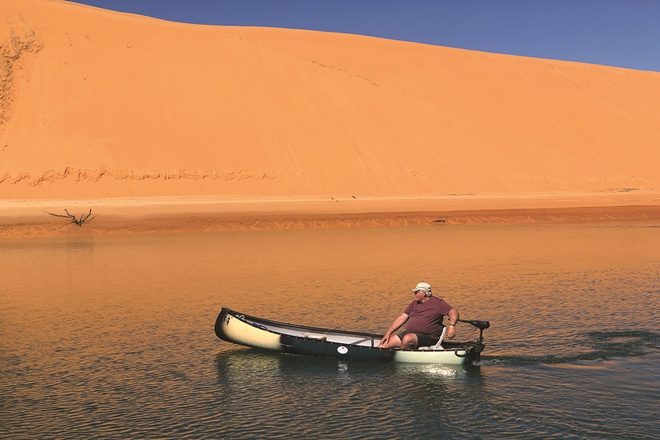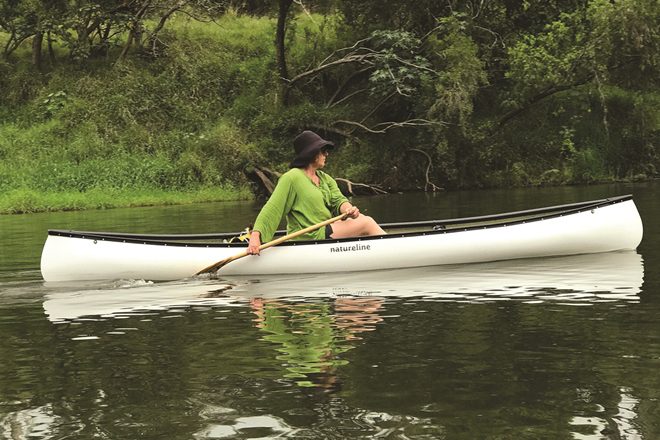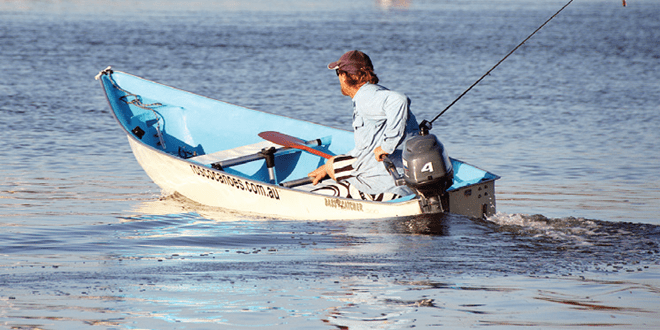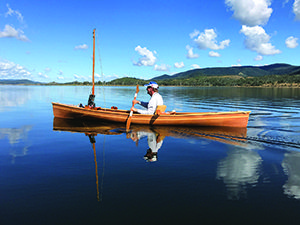
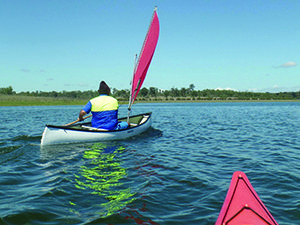
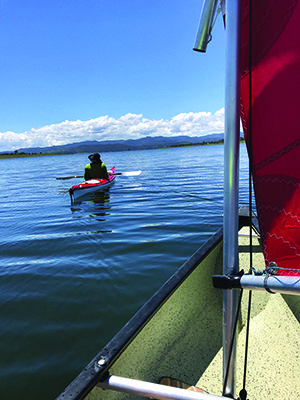
IT’S no secret to anyone who has known me for more than 30 seconds that I’m a huge fan of canoes.
The primary reason for this is their incredible versatility – one simple craft can perform so many tasks. One of my personal favourites, aside from paddling of course, is canoe sailing. Canoes have a relatively stable and efficient hull and lend themselves very nicely to sailing.
While not as capable as a dinghy of withstanding an overturning force, with the correct rig they make fun and effective sailing boats. You’re never going to win an America’s Cup, but you can sure have a great day out on the water when you fit a sailing rig to your canoe!
Having said that, canoe sail racing is quite a big sport in the UK, particularly around the Lakes District. The rig I choose for my canoes is called a lug sail rig. It’s an older design developed for fishing and coastal sailors around the 17th century.
Its ease of use and good performance to windward have made it a design that has seen continued use even in racing dinghies today. The main reason I use it on my canoes is it has less overturning force than a lot of modern rigs, so you’re less likely to take a swim.
When fitted to my 14’ canoe, I’m able to get up to speeds of about five knots (9km/h), which is certainly faster than I can paddle for any length of time. I have taken it out in breezes approaching 15 knots, but anything more is a little too exciting for comfort!
So, the question begs to be asked, where do you take your canoe if you want to go for a sail? While we have a number of great options in southeast Queensland, my favourites have to be the dams in the Somerset region on the Brisbane Valley rivers.
Both Lake Wivenhoe and its smaller brother Somerset make excellent locations for sailing any sort of craft, as evidenced by the location of Brisbane Valley Sailing Club at Logan Inlet on Wivenhoe. With good access to the water, plenty of interesting scenery and a consistent breeze during summer, it makes for a great day out on the water.
Average wind speeds for the area tend to be around 10-12km/h in the mornings, with a slight increase in the afternoons. Certainly enough to push a small sailing canoe along at a nice pace but not so much that you could spill your drink. As any sailor will tell you, sailing involves picking a direction to travel in and then going in another direction entirely.
Canoe sailing is no different, as Mother Nature has a nasty habit of sending a breeze from exactly the direction you’re intending to travel in. With that in mind, sailing locations with plenty of open space in which to manoeuvre are always best. If all else fails, you always have a paddle…
On Wivenhoe, the launch sites at Billies Bay and Logan Inlet offer plenty of open water and a favourable prevailing breeze, while on Somerset the Kirkleagh area is best, especially if you head north and away from skiers. For my money, I think it’s hard to beat sailing out from Logan Inlet, across and around Pelican Island and then back again.
The scenery on this route incorporates the full range of what Wivenhoe has to offer, with glimpses of the D’Aguilar Range and the many wooded inlets at the southern end of the dam. As with any water-based activity, make sure you check the weather forecast before heading out.
The old saying “You can have too much of a good thing” definitely applies when sailing. Wind speeds between seven and 15 knots are perfect, especially if they’re coming from behind you on the homeward leg of your trip. Anything more will be a handful for most paddlers and anything less is really just a paddling trip with an annoying sail flopping about in your face.
Also make sure you check wind direction to determine the best route for your trip. Catching a free ride on the end of an extended paddling journey can turn a long slog on open water into a pleasurable run home. The best part about canoe sailing is how easy it is.
You don’t need a professionally made sail kit, as any flat surface will catch a tailwind on a paddling trip and provide an easy ride. In fact, anyone with a hiking fly in their shed can jerry rig up a sailing rig for their canoe. For handier paddlers, building a homemade sail kit is relatively straightforward and you’ll find plenty of photos on the internet for inspiration.
Retrofitting to an old or existing canoe is straightforward and can be as simple as lashing a couple of paddles together. It really can be as simple or complex as you choose to make it – you’re only limited by your creativity. So, if you’re looking for something new to try with your old favourite canoe, or a new way to traverse our inland waterways, I highly recommend you give canoe sailing a go.
To find out more about how to fit a sail to your canoe, or having one made professionally, give One Tree Canoe Company a call and we’d be delighted to help get you under sail!
 Bush 'n Beach Fishing Magazine Location reports & tips for fishing, boating, camping, kayaking, 4WDing in Queensland and Northern NSW
Bush 'n Beach Fishing Magazine Location reports & tips for fishing, boating, camping, kayaking, 4WDing in Queensland and Northern NSW





